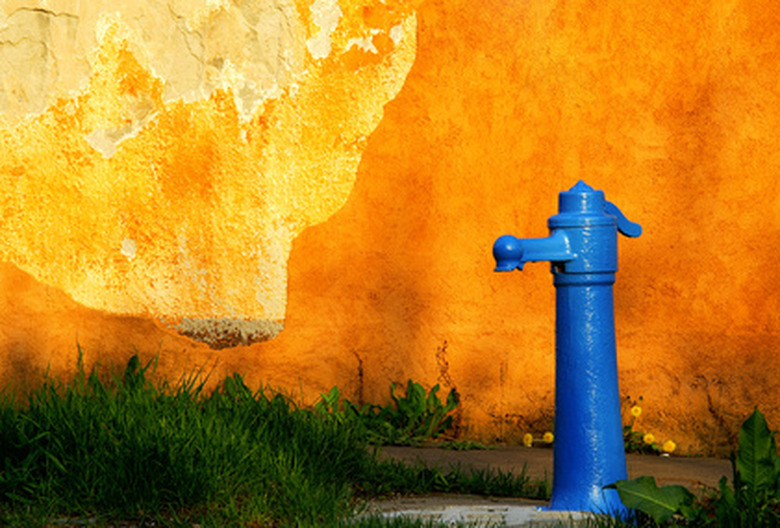How To Find Underground Water
According to the United States Geological Survey, there is more freshwater located underground than there is in all of the earth's freshwater lakes and rivers. The United States Geological Survey states there is over 2,000,000 mi3 of freshwater stored within a half mile of the earth's surface, in comparison to 60,000 mi3 of freshwater in lakes, inland seas and rivers. If you need to locate underground water for a residential well or other purpose, chances are that water exists below the surface of the land. All you have to do is find it.
Step 1
Examine the surrounding landscape for clues as to where water might be located on the property. Water is more likely to be present in areas of depression, such as a valley, rather than a hilly area. The presence of certain plants and trees that gravitate toward water can also be a clue to the existence of underground water sources. You may need to do some research or consult with a professional horticulturist who can help you to identify the species of trees and plants in your area that may be feeding from underground water sources.
Step 2
Dig in areas of dried up riverbeds, ponds or streams. Infonet-Biovision.com notes that even in areas of dried up riverbeds and streambeds, underground water often exists just below the surface. Use a common shovel or spade to dig several test holes five to seven feet in ground depth. Keep the test holes spaced at least four feet apart to help you determine if underground water may be present in one area and not another. If water is present underground, it will begin to seep into the hole as you dig close to the water level.
Step 3
Hire a professional water locator, who you can find in your local yellow page listings. Many professional water locators use special electroseismic equipment that sends seismic waves through the ground and detects the movement of any existing water below. The seismic waves are monitored with a computerized device. Not only can the technology detect water below the surface, but the equipment can also help determine depth and permeability so you will know whether the underground water supply is sufficient to warrant the cost of digging.
Step 4
Call a water divination expert or practice the technique yourself. Water divination is also known as dowsing and utilizes two L-shaped or Y-shaped rods or twigs to detect water below ground. Hold one rod in each hand stretched in front of you, and slowly walk over the property. The dowsing rods are supposed to twitch or rotate toward each other at the areas where water is located below ground.
Things Needed
- Yellow pages
- Divining rods
- Shovels
Cite This Article
MLA
Melone, Sara. "How To Find Underground Water" sciencing.com, https://www.sciencing.com/underground-water-6548733/. 13 March 2018.
APA
Melone, Sara. (2018, March 13). How To Find Underground Water. sciencing.com. Retrieved from https://www.sciencing.com/underground-water-6548733/
Chicago
Melone, Sara. How To Find Underground Water last modified March 24, 2022. https://www.sciencing.com/underground-water-6548733/
